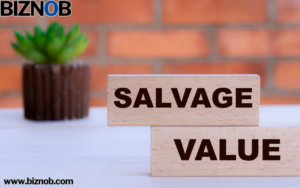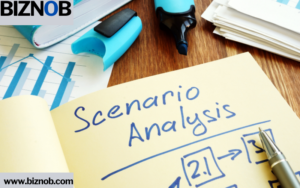What Is Stagflation?
An economic cycle known as “stagflation” is defined by inflation, high unemployment, and sluggish growth. This combination is highly challenging for economic officials to manage since trying to address one of the problems may make another worse.
Since the oil crises of the 1970s, stagflation has regularly happened in the developed world, defying economists’ once-impossible theory.
Many predicted that stagflation would soon hit the US, if only briefly, around the middle of 2022, even though it had not yet occurred. Forbes magazine said in June 2022 that stagflation was likely to occur because economic officials would prioritize addressing unemployment before inflation.
Understanding Stagflation
During a period of economic strain in the United Kingdom in 1965, British politician Iain Macleod coined the word “stagflation” during a speech before the House of Commons.
He referred to the state of inflation and stagnation together as a “stagflation situation.”
The phrase gained new meaning in the United States in the wake of the oil crisis of the 1970s, which resulted in a recession that saw five quarters of GDP contraction.
In 1973, inflation doubled, and in 1974, it reached double digits. By May 1975, unemployment had risen to 9%.
An index of unhappiness was used to demonstrate the impacts of stagflation. This index measures the actual consequences of stagflation on a country’s population by adding unemployment and inflation rates.
Stagflation’s Past
It was initially thought that stagflation was impossible. It was excluded from the models of the economic theories that dominated governmental and academic circles throughout the majority of the 20th century. Specifically, macroeconomic policy was depicted as a trade-off between inflation and unemployment in the framework of Keynesian economics via the development of the Phillips Curve economic theory.
Due to the Great Depression and the rise of Keynesian economics, economists started to worry about deflation risks. They made the case that most measures intended to reduce inflation also tend to increase unemployment and vice versa.
This was shown to be untrue when stagflation struck the developed nations later in the 20th century. One excellent illustration of how empirical data may overrule conventional economic theory and policy recommendations is the phenomenon of stagflation.
Since then, it has been shown that inflation may endure even in times of weak or negative economic development. Consumer pricing levels have continuously increased annually throughout the last 50 years of reported recessions in the United States.
The lowest point of the 2008 financial crisis was the only partial exception to this rule, and even then, the price decrease was limited to energy and transportation costs, with total consumer prices rising.
Why does stagnation occur?
Regarding the reasons behind stagflation, economists are still in agreement. Even though it was formerly thought impossible, they have presented several explanations for how it happens.
I blame shocks in oil prices.
According to one explanation, stagflation results from an abrupt rise in the price of oil that lowers an economy’s productive potential.
The most notable example is the oil crisis of the 1970s. The Organization of Petroleum Exporting Countries (OPEC) imposed an embargo on Western nations in October 1973. As a result, there was a sharp increase in the price of oil globally, which raised the cost of commodities and increased unemployment.
The cost of manufacturing goods and getting them onto store shelves increased due to rising transportation expenses, and prices increased even as more people lost their employment.
Opponents of this idea point out that none of the concurrent episodes of inflation and recession that have transpired since the embargo have been associated with abrupt oil price shocks such as those in the 1970s.
Because of ineffective economic policies.
Another view holds that inadequate economic policy is to blame for the convergence of inflation and stagnation. Stagflation may result from strict control of labor, products, and markets in an otherwise inflationary environment.
Some blame the actions of former President Richard Nixon, who may have caused the 1970 recession and served as a model for subsequent stagflationary eras. Nixon tried to stop prices from increasing by putting taxes on imports and imposing a 90-day wage and price freeze.
Economic anarchy resulted from the sharp price increase when the limits were loosened.
Although attractive, this is an ad hoc explanation for the 1970s stagflation that does not account for subsequent periods in which prices and unemployment rose simultaneously.
Accuse the Gold Standard’s Decline
According to some theories, monetary factors may also cause stagflation.
Nixon dismantled the Bretton Woods system, which had regulated currency exchange rates, and eliminated the remaining indirect traces of the gold standard.
With the removal of the currency’s backing from commodities, this decision placed the US dollar and the majority of other international currencies on a fiat foundation, eliminating the majority of realistic restrictions on monetary growth and currency depreciation.
Inflation vs Stagflation
Regardless of the rationale, since the 1970s, inflation has continued to occur during economic stagnation.
Some economists have questioned the idea of a steady correlation between unemployment and inflation even before the 1970s. They contend that increasing prices cause producers and consumers to modify their economic behavior in anticipation of or response to monetary policy changes.
Because of this, prices increase in reaction to expansionary monetary policy without causing unemployment to decline, but unemployment rates fluctuate in response to actual economic shocks.
This suggests that measures to boost the economy during recessions could only result in price inflation rather than contributing to actual economic development.
Author and urbanist Jane Jacobs saw the scholastic concentration on the country instead of the city as the main economic engine as the reason for the disputes among economists about the reasons for the stagflation of the 1970s. According to her, a nation must provide incentives for developing “import-replacing cities” that balance import and production to prevent the stagflation phenomenon. Some criticized this idea—the diversification of city economies—for lacking scholarly support, while others found it persuasive.
Particular Points to Remember
Most economists and politicians have reached a de facto agreement on stagflation, redefining what inflation means in contemporary currency and financial systems. Inflation, or continuously increasing prices with declining buying power, is a natural aspect of prosperous and poor economic eras.
Policymakers and economists often anticipate price increases and concentrate more on managing inflation than actual inflation.
These days, the dramatic stagflation events of the 1970s may be relegated to the annals of history. However, concurrent price increases and economic stagnation have become normal during economic downturns.
Why does stagnation occur?
Regarding the underlying causes of stagflation, economists differ.
Generally speaking, a supply shock sets the foundation for stagflation. This is an unforeseen circumstance, such as a break in the oil supply or a scarcity of necessary components. A similar shock happened during the COVID-19 epidemic, when the supply of semiconductors was disrupted, slowing the manufacture of vehicles, appliances, computers, and other items.
Such a shock could impact all three facets of stagflation—inflation, employment, and economic growth.
How Come Stagflation Is Bad?
The three disadvantages of stagflation are increased unemployment, slower economic development, and higher pricing.
By economic logic, this is different from a combination that should happen. Prices ought not to rise as consumer spending declines.
What is the Stagflation Cure?
Stagflation has no specific treatment. Economists generally agree that productivity must rise to the point where doing so would spur faster growth without raising prices. As a result, monetary policy might be tightened to control the inflation part of stagflation.
The key to preventing stagflation is for economic officials to be exceedingly proactive in avoiding it, which is easier said than done.
Conclusion
- The simultaneous occurrence of weak development, high unemployment, and increasing prices in an economy is known as stagflation.
- Previously deemed unfeasible by economists, stagflation has transpired on many occasions in the industrialized world since the 1970s.
- Policy responses to poor development often make inflation worse and vice versa. This makes combating stagflation challenging.

























































